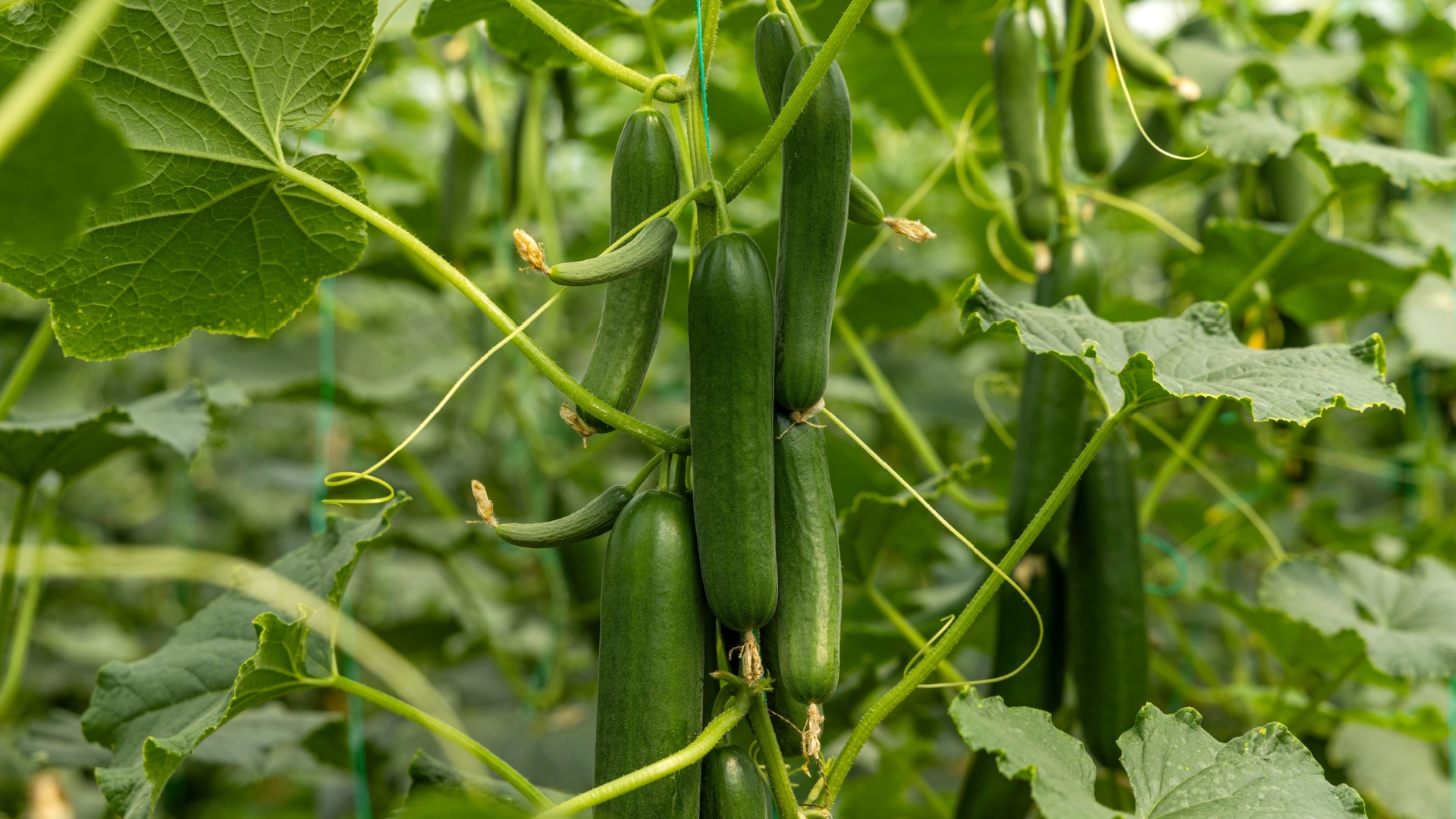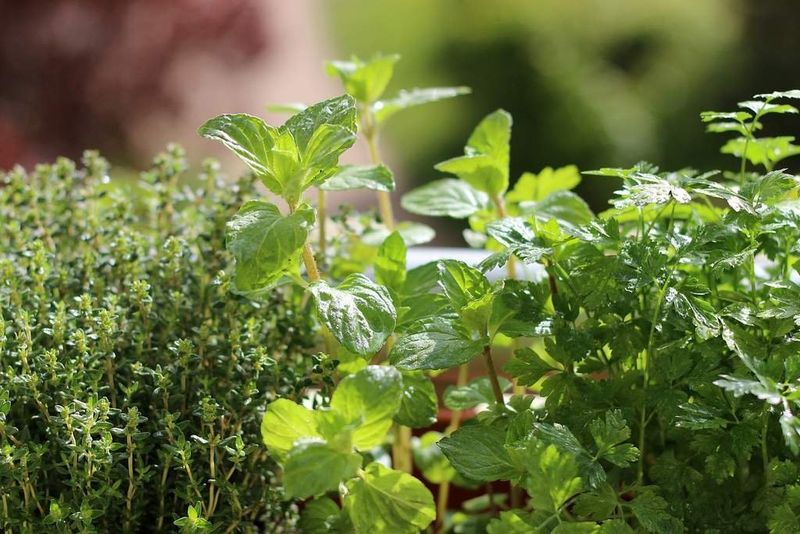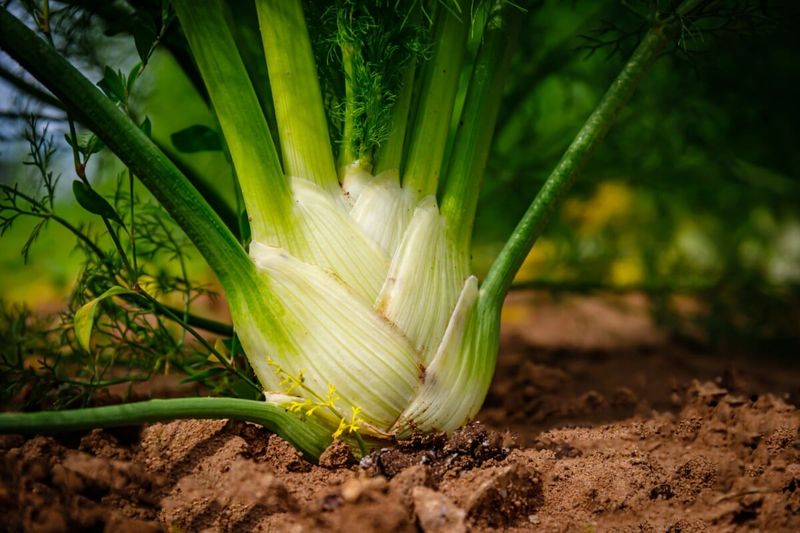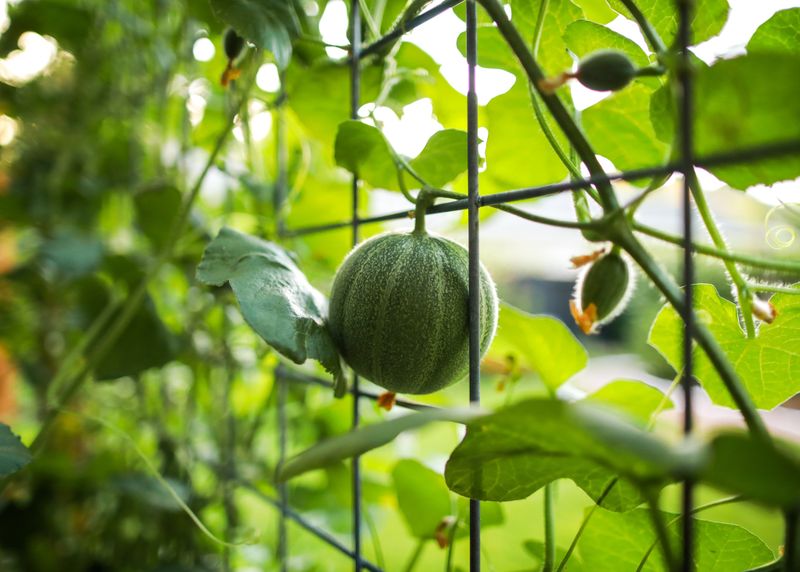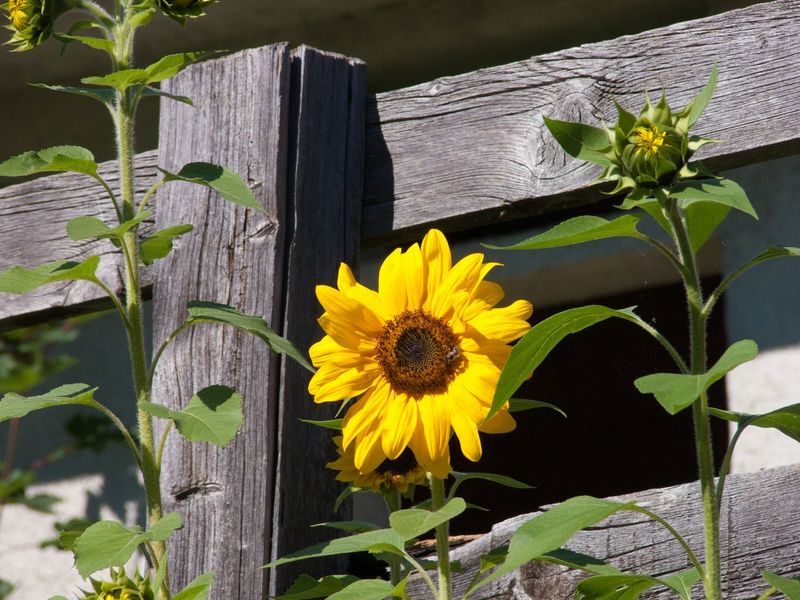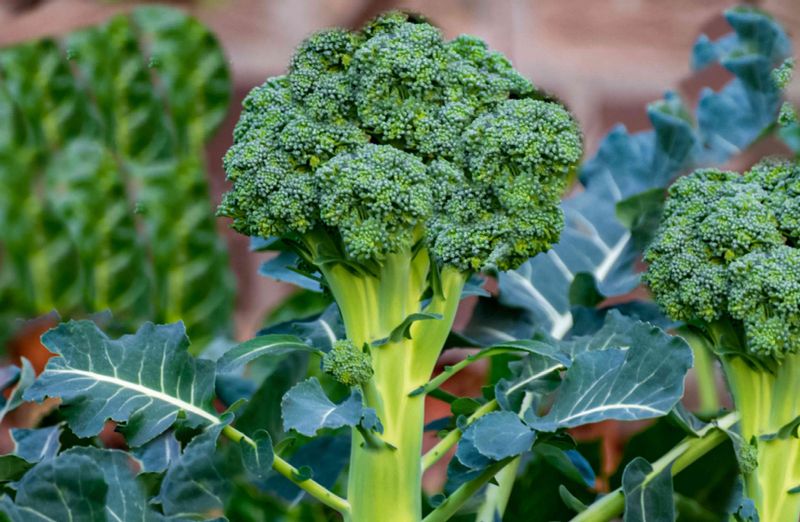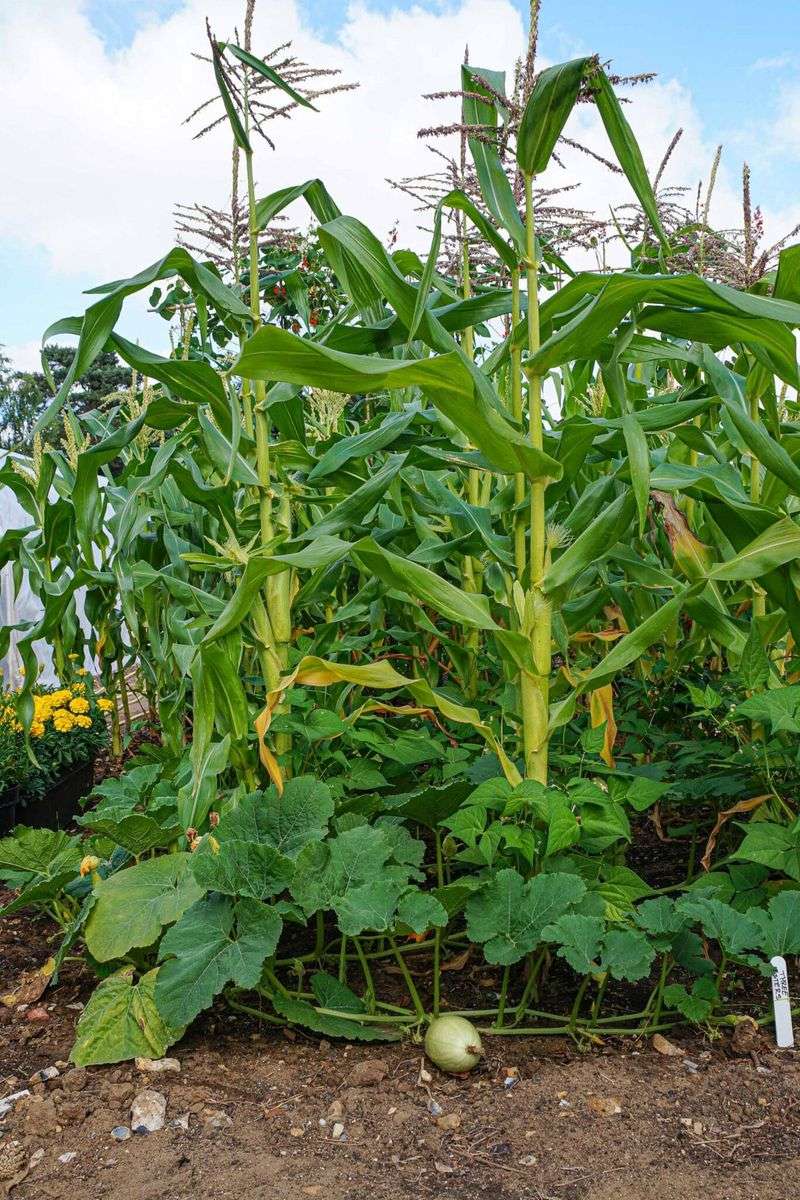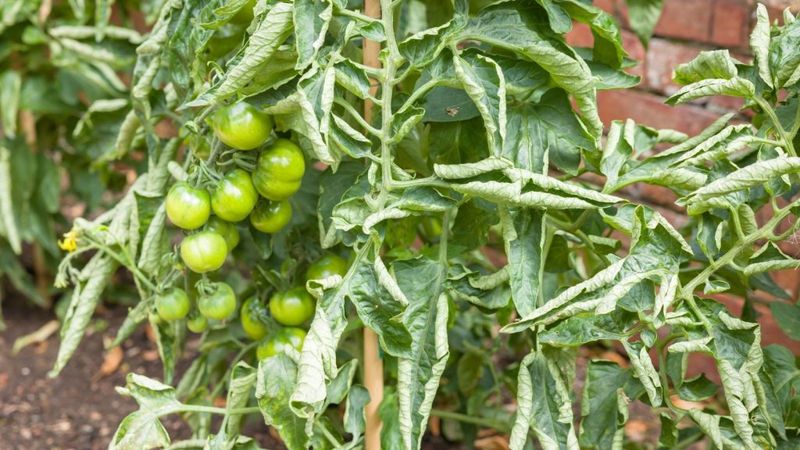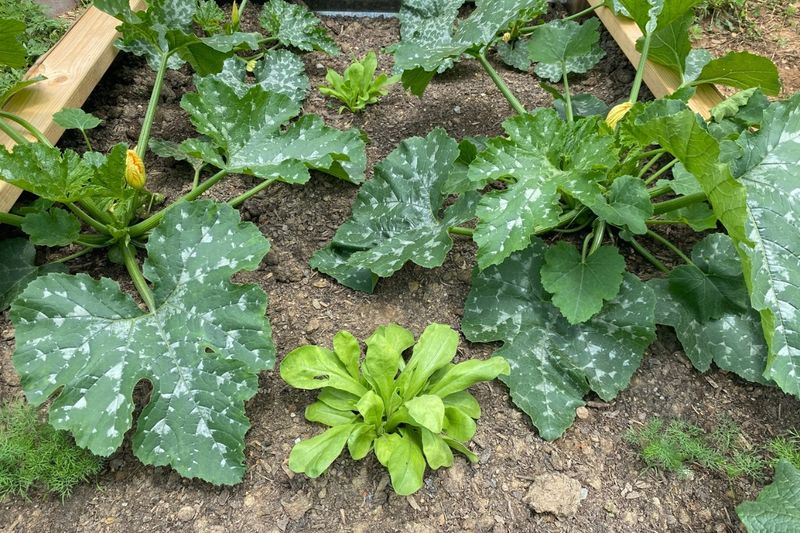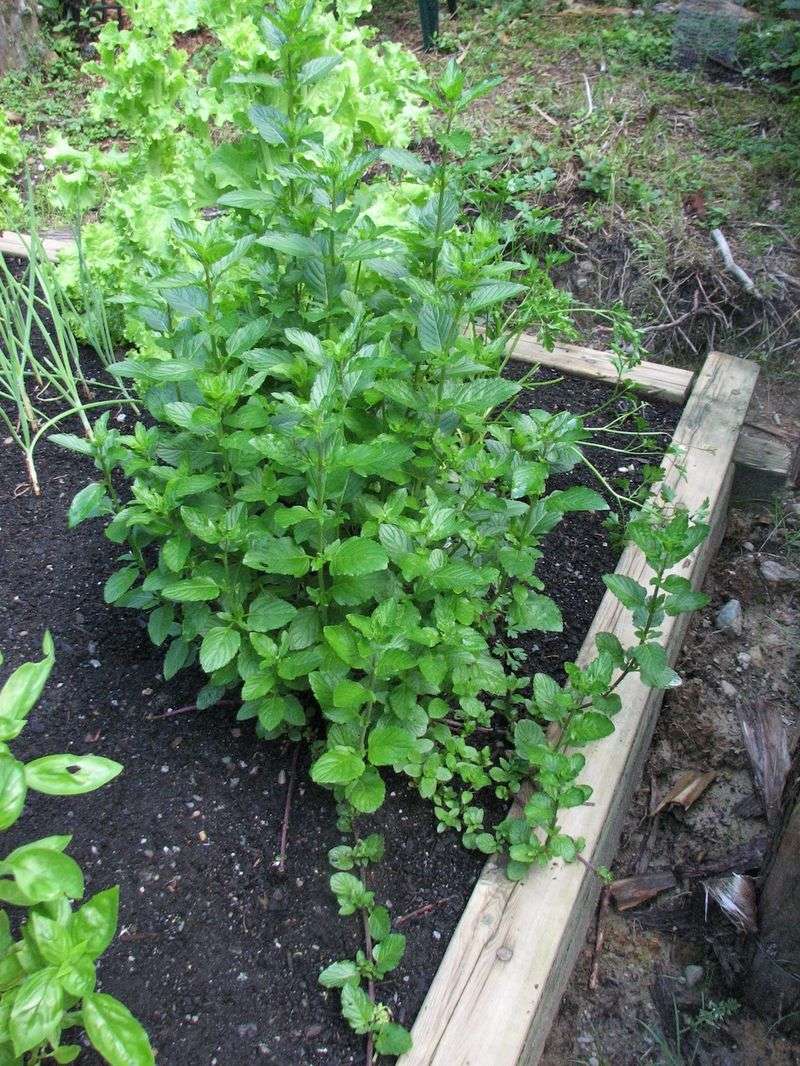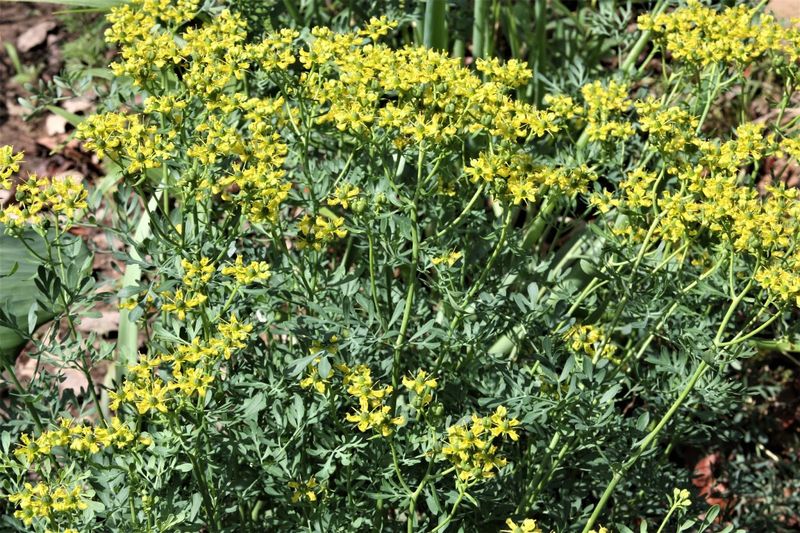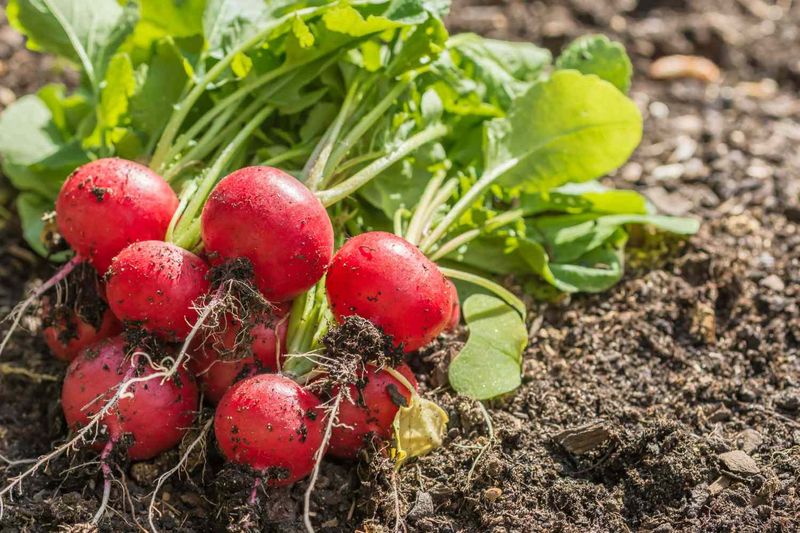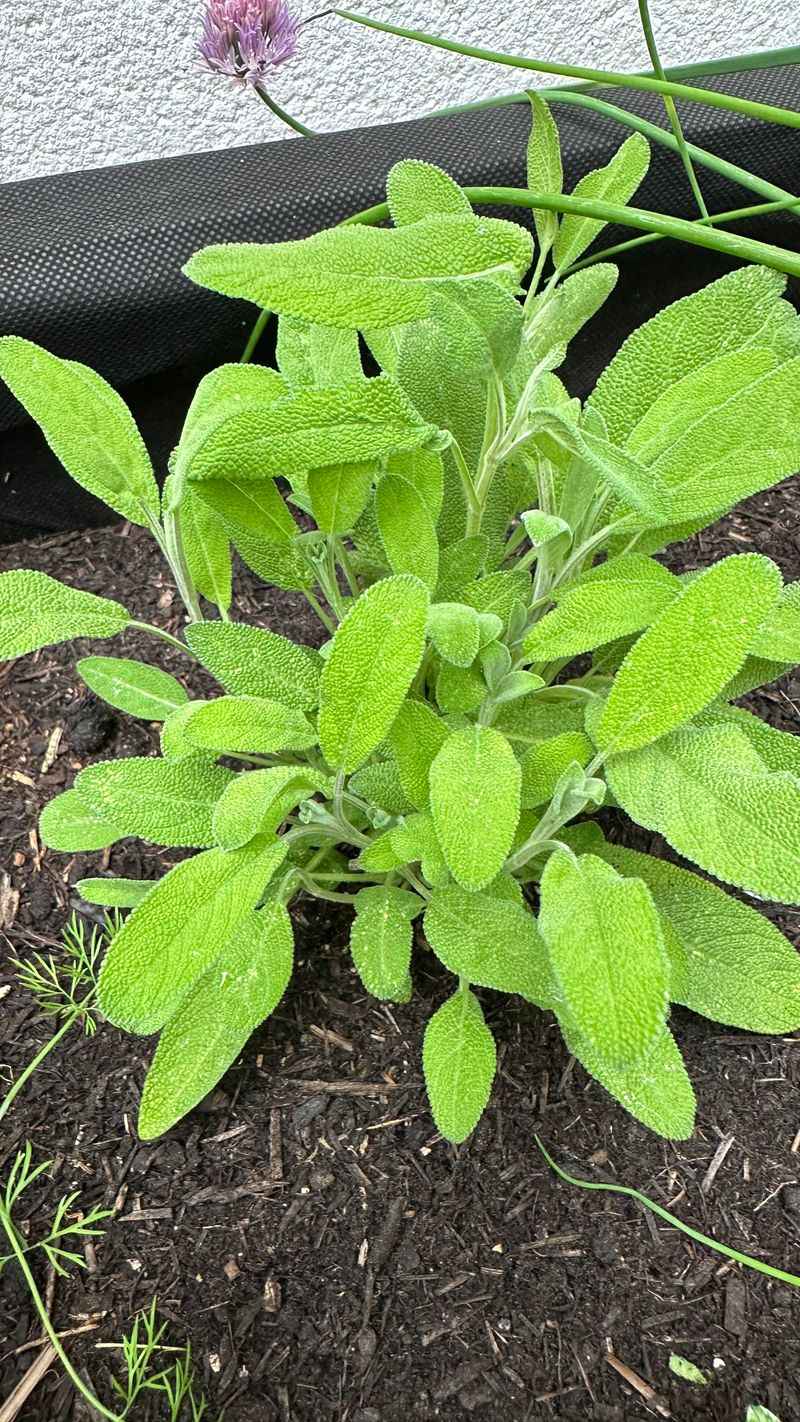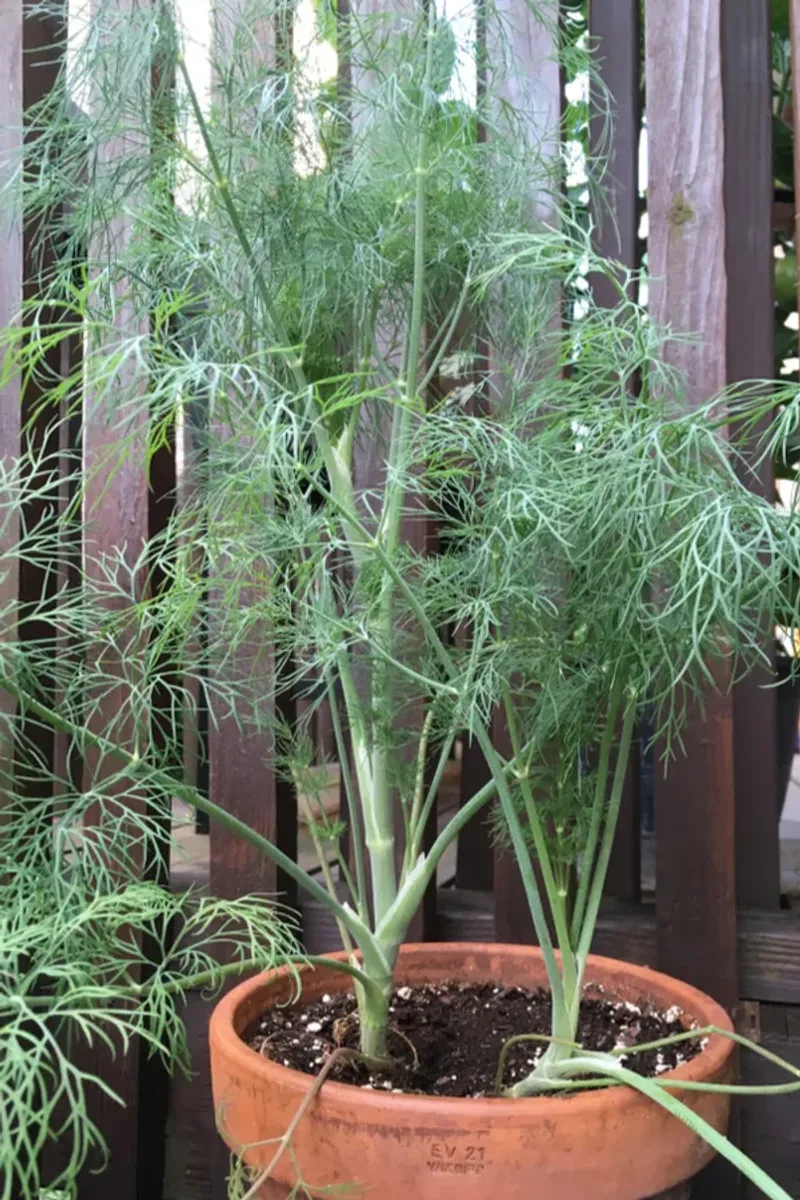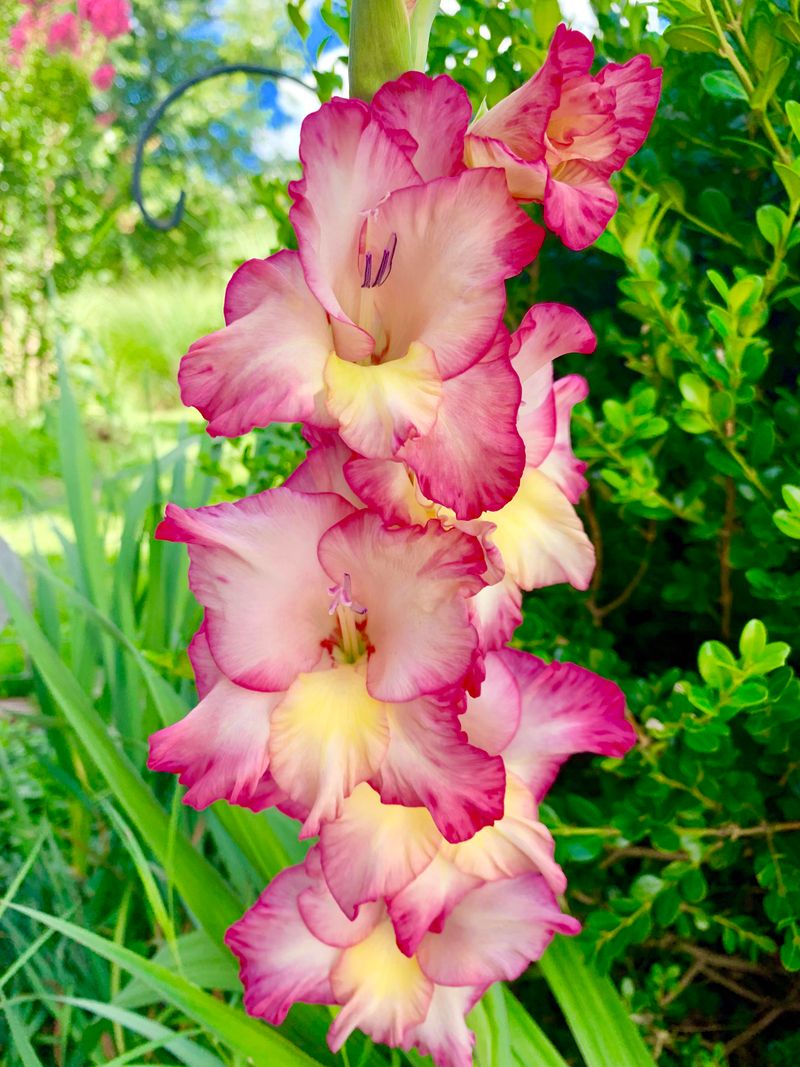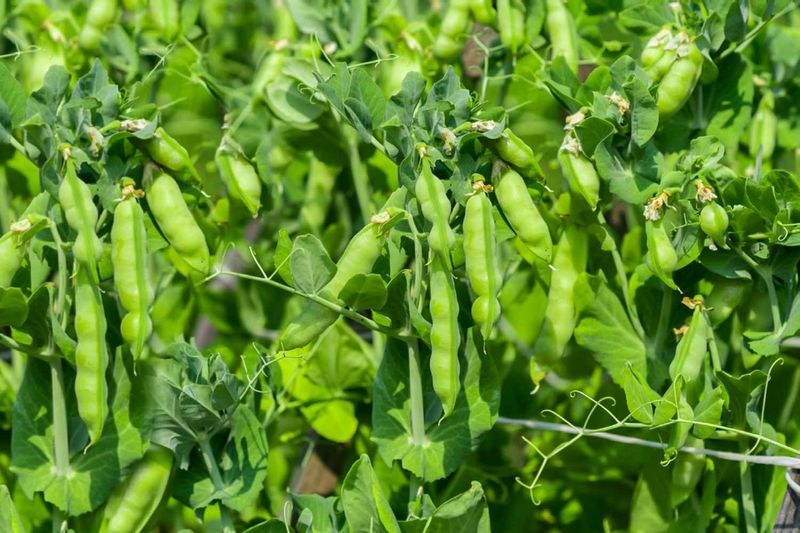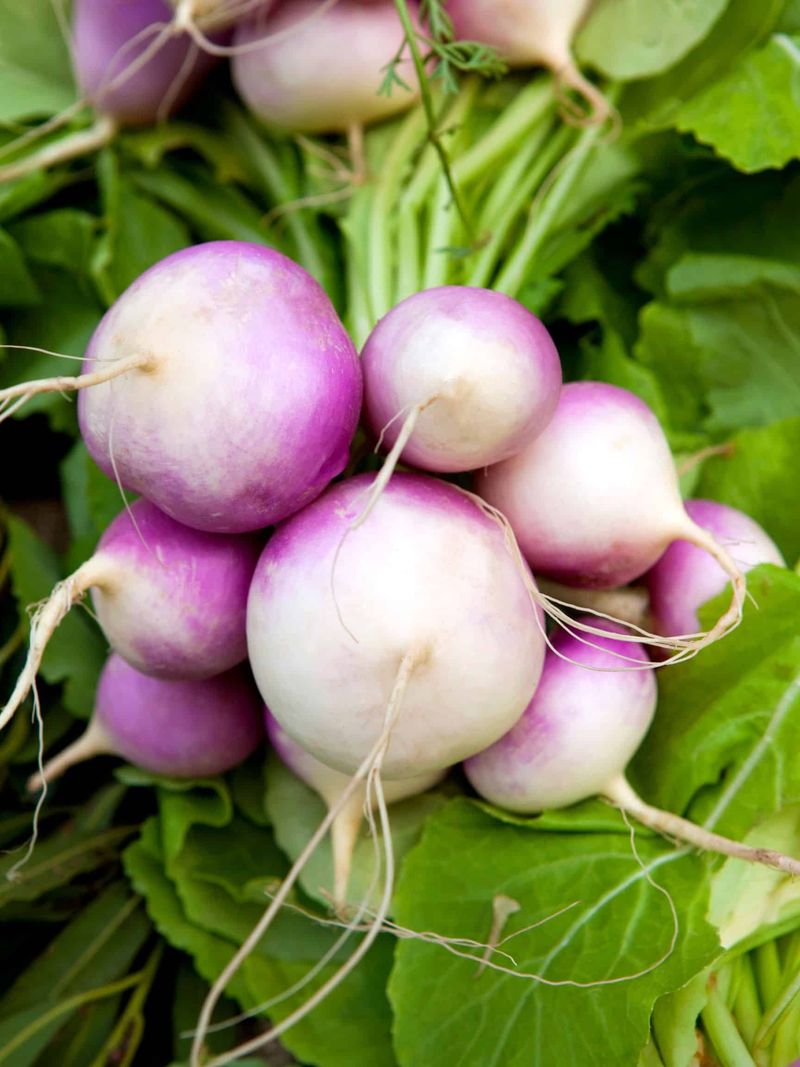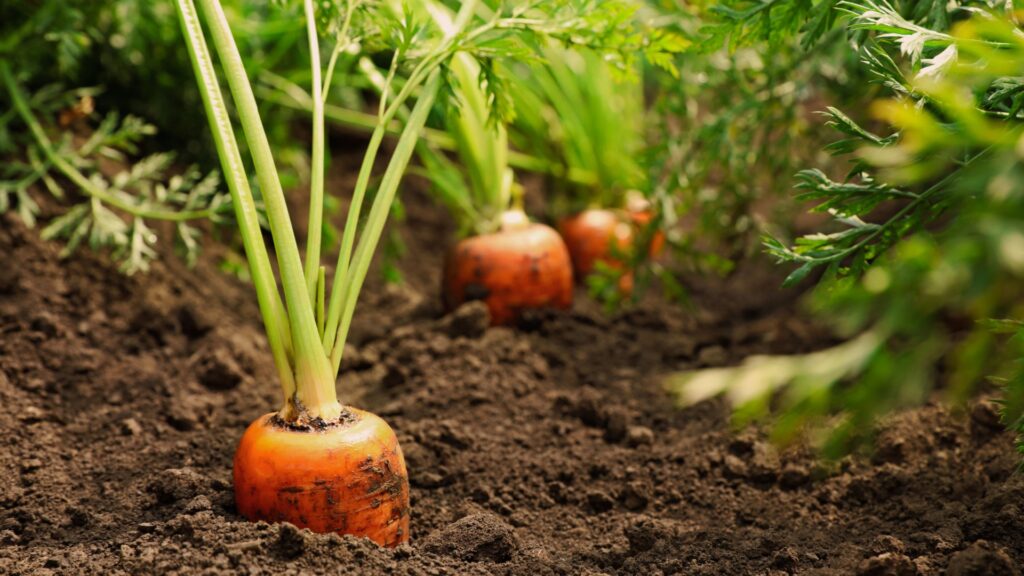Planted cucumbers with high hopes, only to reap bitter fruit and droopy vines? Don’t blame your green thumb just yet—the culprit might be bad company.
Like people, plants have their favorites (and foes). Some neighbors lift cucumbers up; others drag them down by hogging nutrients, luring pests, or throwing shade—literally. I learned that the hard way, and my harvest paid the price.
Save yourself the heartache. Here’s the lowdown on who not to plant next to your cukes. A little planning now means crunchy, garden-fresh rewards later.
1. Potatoes
Garden space becomes a battlefield when potatoes and cucumbers share soil. These starchy tubers are notorious for stealing nutrients that cucumbers desperately need, especially phosphorus.
The real trouble starts underground where potato roots secrete substances that can inhibit cucumber growth. Many gardeners notice their cucumber vines looking stunted and yellow when growing near potato plants.
Additionally, both crops attract similar pests like aphids and cucumber beetles, creating a pest buffet in your garden bed. Keep these plants in separate areas of your garden to avoid disappointing harvests.
2. Aromatic Herbs
Strong-scented herbs like rosemary, sage, and basil release oils that can stunt cucumber development. The volatile compounds these herbs produce as natural protection mechanisms interfere with the delicate growth patterns of cucumber plants.
Gardeners often make the mistake of planting these herbs nearby thinking they’ll repel cucumber pests. Instead, the cucumber plants develop fewer leaves and produce smaller fruits when surrounded by these aromatic neighbors.
The effect is particularly noticeable during hot weather when herbs release more of their essential oils. Keep a garden bed’s distance between your cucumbers and these fragrant herbs.
3. Fennel
Fennel might look innocent with its feathery fronds, but it’s one of the most aggressive plant bullies in the garden. This herb releases allelopathic compounds that actively suppress growth in nearby plants, making it especially harmful to cucumbers.
The chemicals fennel secretes into the soil can remain active for weeks, continuing to harm cucumber roots even after the fennel is removed. Many gardeners report complete cucumber failure when planted within several feet of fennel.
Even the pollen from fennel flowers can drift onto cucumber blossoms and interfere with proper pollination. Give fennel its own isolated spot far from your cucumber patch.
4. Melons
Melons and cucumbers belong to the same plant family, creating problems when grown close together. They compete for the same nutrients and water, often leaving both crops underperforming compared to when they’re grown separately.
The biggest issue comes from shared pests and diseases. Cucumber beetles, squash bugs, and powdery mildew spread rapidly between these related plants when they’re neighbors.
Their sprawling growth habits also create practical problems in the garden. The vines tangle together, making it difficult to harvest either crop without damaging the other plants. Keep melons and cucumbers in different sections of your garden for better results.
5. Sunflowers
Sunflowers cast long shadows that prevent cucumbers from getting the full sun they need to produce well. These tall garden favorites can reduce cucumber yields by up to 30% when planted too closely.
Beyond the shade problem, sunflowers are notorious for their allelopathic properties. Their roots release chemicals that inhibit the growth of nearby plants, including cucumbers.
Sunflowers also attract cucumber beetles which jump easily from the flowers to your cucumber patch. The beetles not only damage foliage but spread bacterial wilt disease that can kill cucumber plants within days. Keep sunflowers at least 10 feet away from your cucumber beds.
6. Brassicas
Cabbage, broccoli, and other brassica family members are heavy feeders that deplete soil nutrients cucumbers need. These leafy vegetables consume large amounts of nitrogen, leaving little for your cucumber plants.
The dense foliage of mature brassicas creates humid microclimates that encourage fungal diseases. When planted near cucumbers, both crops become more susceptible to problems like downy mildew and black rot.
Brassicas also attract cabbage moths whose caterpillars can quickly move to cucumber plants. While they prefer cabbage family plants, these hungry pests will happily munch on cucumber leaves when convenient. Keep these plant families separated in your garden rotation plan.
7. Corn
Tall corn stalks create excessive shade that prevents cucumbers from receiving the sunlight they need. Cucumbers require at least 6-8 hours of direct sun daily, which becomes impossible when corn towers overhead.
Corn’s extensive root system competes aggressively for water and nutrients. Its shallow feeder roots often extend several feet in all directions, intercepting resources before cucumber roots can access them.
Another problem occurs during pollination. Corn pollen can interfere with cucumber flower pollination when plants grow too close together. The heavy corn pollen lands on cucumber stigmas, blocking them from receiving their own pollen and reducing fruit set dramatically.
8. Tomatoes
Growing tomatoes near cucumbers creates a disease hotspot in your garden. Both plants are susceptible to similar fungal problems like early blight and verticillium wilt that spread rapidly between neighboring plants.
The trellising needs of these crops also conflict. Tomatoes require sturdy, upright supports while cucumbers prefer horizontal trellising or ground space to spread. When grown together, their vines become hopelessly entangled.
Tomatoes and cucumbers also attract the same pests, particularly aphids and whiteflies. These sap-sucking insects multiply quickly when they can move easily between host plants. Separating these crops by at least 4-5 feet helps prevent both disease and pest problems.
9. Squash
Squash plants produce massive leaves that can quickly overshadow cucumber vines. Their aggressive growth habit means they often win the competition for light, leaving cucumbers struggling in the shade.
Both plants belong to the cucurbit family and suffer from identical pest problems. Squash bugs, cucumber beetles, and vine borers move freely between related plants, causing double the damage when these crops grow side-by-side.
Cross-pollination can also become an issue when growing these related plants nearby. While it won’t affect this year’s harvest, saving seeds from either crop becomes problematic as they may produce strange hybrid vegetables next season. Plant squash and cucumbers at opposite ends of your garden.
10. Mint
Mint’s aggressive spreading habit makes it a nightmare neighbor for cucumber plants. Its underground runners quickly invade cucumber root zones, stealing water and nutrients while crowding out the less competitive cucumber roots.
The strong oils released by mint plants can also inhibit seed germination and seedling growth in nearby cucumbers. Many gardeners notice poor cucumber establishment when mint grows nearby.
While mint repels some garden pests, it actually attracts flea beetles that can damage cucumber seedlings. These tiny jumping insects chew holes in leaves, weakening young plants during their critical establishment phase. Always grow mint in containers, never directly in garden beds near cucumbers.
11. Rue
Rue contains powerful natural compounds that actively suppress cucumber growth. This ornamental herb releases chemicals that prevent cucumber seeds from germinating properly and stunt the development of established plants.
Gardeners who plant rue near cucumbers often notice their cucumber vines developing unusual leaf distortions. The volatile oils from rue leaves interfere with normal cell division in cucumber plants.
Handling rue and then touching cucumber plants can even transfer enough of these compounds to cause damage. Keep rue completely separate from your vegetable garden, or better yet, grow it in containers away from food crops entirely.
12. Radishes
Radishes compete directly with cucumbers for root space and nutrients in the soil. Their quick-growing roots occupy the same soil layer that cucumber roots need for early establishment.
Many gardeners mistakenly plant radishes with cucumbers thinking their fast growth cycle won’t impact the slower-growing cucumbers. However, radishes leave behind compounds in the soil that can inhibit cucumber root development.
Radishes also attract flea beetles that quickly move to cucumber seedlings when the radishes are harvested. These pests create small holes in cucumber leaves that reduce photosynthesis and weaken young plants. Plant radishes in a different garden bed rotation than cucumbers.
13. Sage
Sage contains powerful aromatic oils that inhibit cucumber seed germination. The volatile compounds released from sage leaves create a zone around the plant where cucumber seeds struggle to sprout and develop properly.
Even established cucumber plants show signs of stress when growing near sage. Their leaves often appear smaller and lighter in color, indicating interference with normal growth processes.
Sage also attracts pollinators that might otherwise visit cucumber flowers. While pollinators are generally beneficial, cucumber plants produce separate male and female flowers that need dedicated pollinator visits. When sage diverts these insects, cucumber pollination rates drop significantly.
14. Dill (When Mature)
Young dill plants actually benefit cucumbers, but mature dill becomes problematic. As dill reaches full size and begins flowering, it releases compounds that stunt cucumber growth and reduce fruit production.
The timing creates a garden dilemma. By the time cucumbers are setting fruit, nearby dill plants are usually flowering and turning into cucumber antagonists.
Mature dill also attracts black swallowtail butterfly caterpillars that can quickly defoliate both dill and nearby cucumber plants when populations are high. While beneficial for butterfly conservation, these hungry caterpillars can devastate young cucumber plants. Plant dill away from cucumbers or harvest it young before it flowers.
15. Gladiolus
Gladiolus flowers might seem like innocent garden additions, but their bulbs compete directly with cucumber roots for nutrients. These flowering plants are particularly greedy for potassium, which cucumbers need for proper fruit development.
The tall gladiolus stalks can cast shadows over cucumber plants during critical growing periods. Even partial shade reduces cucumber yields significantly compared to plants grown in full sun.
Gladiolus also attracts thrips, which are tiny insects that damage cucumber leaves by sucking out plant juices. These pests multiply rapidly and can quickly spread throughout your garden when gladiolus and cucumbers are planted nearby. Keep ornamental flowers in separate garden areas from vegetables.
16. Peas
Peas and cucumbers have opposite temperature preferences that make them poor companions. Peas thrive in cool spring conditions, while cucumbers need warm soil to grow properly.
When planted together, either the peas suffer from summer heat or the cucumbers struggle in cool soil. This timing mismatch creates stressed plants that are more susceptible to disease problems.
Both crops also require trellising, creating competition for vertical growing space. Their vines tangle together, making harvesting difficult and often damaging the more delicate cucumber vines. Plant peas as an early crop and follow with cucumbers in the same space after peas are harvested.
17. Turnips
Turnips and cucumbers battle for the same soil nutrients, particularly nitrogen and phosphorus. The heavy feeding nature of turnip roots depletes these essential elements before cucumber plants can access them.
Root vegetables like turnips also physically disrupt the shallow root systems of cucumber plants. As turnips expand underground, they can damage nearby cucumber roots, reducing the plant’s ability to take up water efficiently.
Turnips attract flea beetles and root maggots that can move to cucumber plants when the turnips are harvested. These pests damage both the leaves and stems of young cucumber plants, sometimes killing them entirely. Keep root crops and cucumbers in separate areas of your garden rotation.
18. Carrots
Carrots may seem harmless, but they’re surprisingly poor neighbors for cucumbers. These root vegetables have a dense growth pattern underground that interferes with cucumber root expansion. This competition limits the cucumber plant’s ability to access water and nutrients, especially in compact or sandy soils.
As carrots grow, they also alter the soil structure in ways that can disrupt cucumber root anchoring. Gardeners often notice cucumber plants growing unevenly or tipping over when planted near maturing carrot rows.
Moreover, carrots can attract certain nematodes that feed on both carrot and cucumber roots, increasing the risk of root damage and poor plant health. For healthier harvests of both crops, give cucumbers and carrots their own dedicated rows in the garden.

